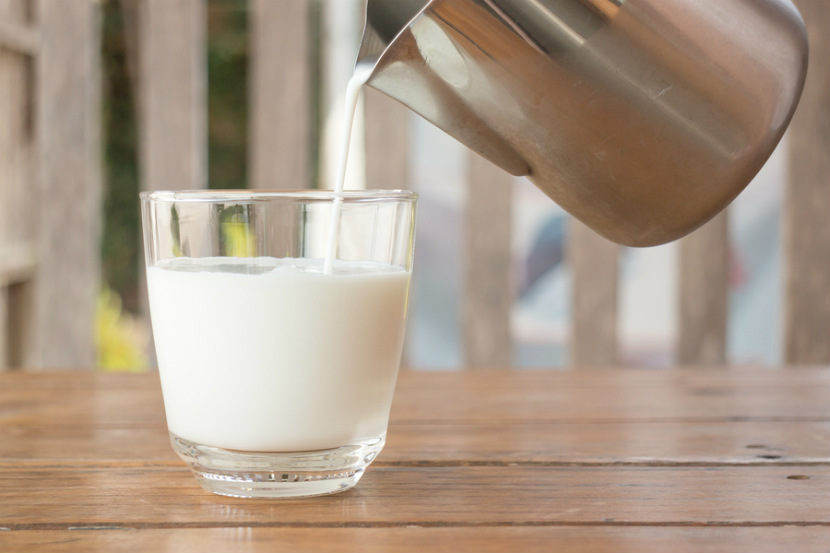
With so many types of cow’s milk available, it’s hard to know what the differences are! Read on to learn about the basics of cow’s milk and tips to buy, store and use it.
The basics of cow’s milk
All types of cow’s milk have the same 16 essential nutrients such as calcium, vitamin D, protein, vitamin B12 and vitamin A. The only difference between the types of cow’s milk in the grocery store is the amount of fat. Cow’s milk comes in four different fat percentages:
-
0.1% milk fat or M.F. (also called skim milk)
-
1% M.F.
-
2% M.F.
-
3.25% M.F. (also called homogenized or whole milk)
Skim, 1% and 2% M.F. are lower fat choices.
Buying local milk
Ontario dairy cows provide milk all year round. There is a good chance the milk you buy at the store comes from a farm in Ontario. When you buy local food, you support farmers and rural communities so they can keep producing high quality, affordable food we can all enjoy.
Different varieties of cow’s milk
Lactose-free or lactose-reduced milk: Lactose is the natural sugar found in milk. Some people have lactose intolerance, which is when you cannot digest lactose. People with lactose intolerance who want to drink milk can have lactose-free or lactose-reduced milk. Both types of milk have the same nutrients as regular milk.
Chocolate milk: Chocolate milk is made with added sugar and cocoa. It has the same nutrients as white milk but extra calories from the added sugar. You can buy 1% or skim milk varieties. Some brands have lower sugar options. If you like chocolate milk, try mixing it with lower fat white milk (like 1% or skim) to enjoy the flavour with less sugar and calories.
Organic milk: This is milk produced by cows that are fed certified organic feed. It is nutritious and safe like regular milk. Some people choose to drink organic milk because they want to support organic agriculture and/or they prefer the taste.
Ultra Filtered or Micro-Filtered milk: This milk stays fresher longer and some people find it has a creamier taste.
Buttermilk: Buttermilk is made with lower fat milk and a bacterial culture to make it thick and tangy. It is often used in baking. Unlike regular milk, buttermilk has no added vitamin D.
Unpasteurized (raw) milk: Unpasteurized (raw) milk is not allowed to be sold in Canada because it is not safe and can cause illness. If you buy milk from a farm or farmer’s market, make sure you ask whether the milk has been pasteurized. If you can’t be sure, avoid it.
Does cow’s milk contain hormones or antibiotics?
Canadian dairy cows are not given growth hormones to increase milk supply. Cows are sometimes given antibiotics because of an infection. The milk they produce while taking antibiotics is not sold.
Buying cow's milk
-
Check the best before date when buying milk.
-
Milk sold in bags is often a better buy than cartons of milk.
Tips for storing milk
-
Store milk on a shelf in the fridge. The inside of the fridge door is not cold enough.
-
Put milk in the fridge right away after you are finished using it.
-
Throw away any milk left out at room temperature for more than 2 hours.
-
Milk can be frozen for 3 months. When milk freezes, the colour may change slightly and the milk solids can separate. Stir or shake the defrosted milk to mix the solids and liquids back together. Remember to defrost milk in the fridge.
5 things to do with milk
-
Use milk instead of water in hot chocolate, oatmeal and in pancake, crepe and muffin recipes.
-
Swap a morning coffee for a café latte, chai tea latte or refreshing smoothie made with milk.
-
Use milk instead of cream in soup, tea and coffee.
-
Enjoy milk-based desserts: bread pudding, custard, rice pudding, milk pudding.
-
Try fish poached in milk.
More recipes
Spiced hot chocolate
Banana Whole Grain Griddle Cakes
Overnight Apple Pie Oatmeal
Masa (corn) pancakes (made with buttermilk)
You may also be interested in
All about evaporated milk
All about skim milk powder
Facts on pasteurization
Understanding Non-Dairy Beverages
Last Update – February 27, 2019